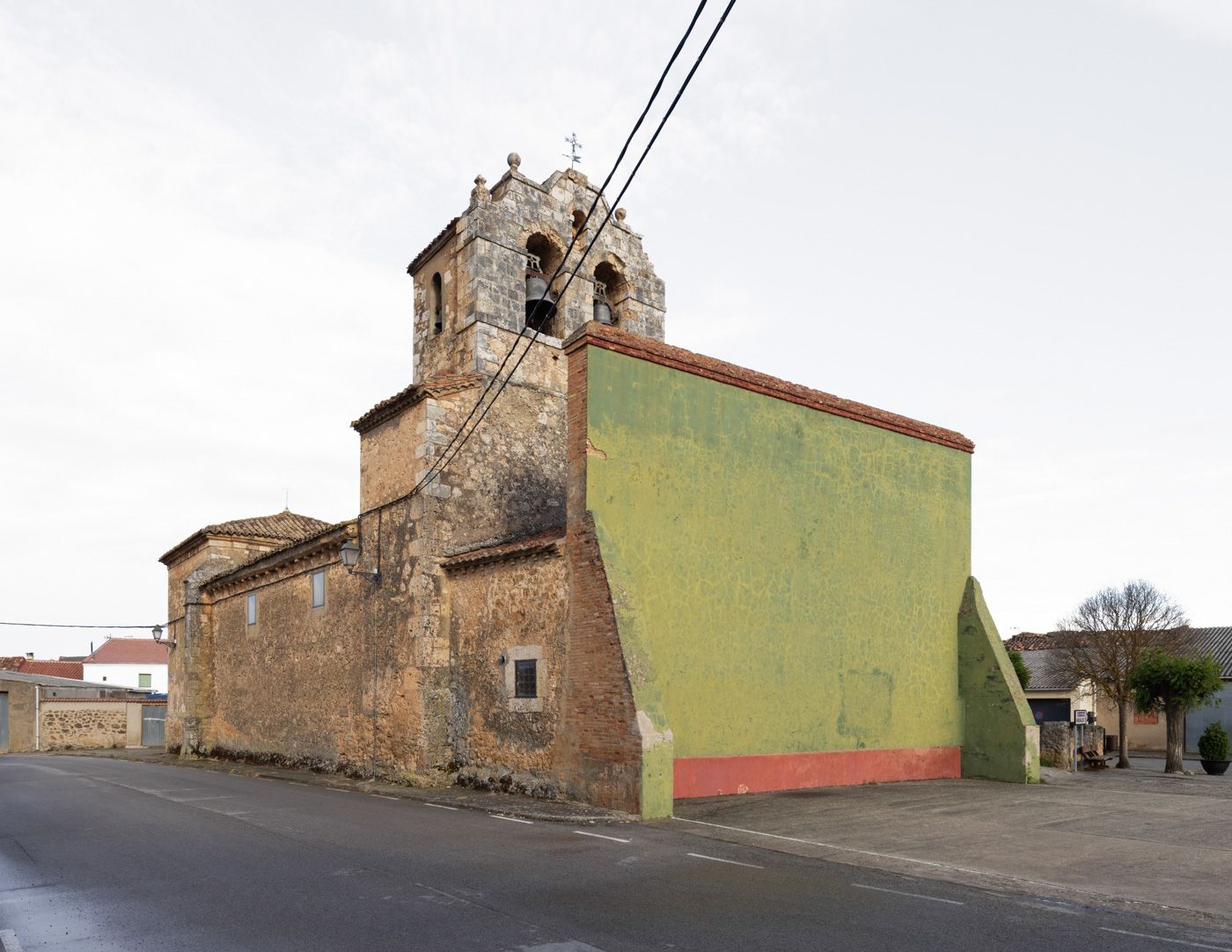Frontón is a handball game where single or double opponents compete by hitting a small rubber ball with their hands against a wall.
Usually, the fronton wall can be found in the main square, the natural meeting spot of the villages.
In many places, the exterior of the church mural served as a fronton wall. Priests became well known players as they had the wall nearby and
met with the villagers after the Sunday mass for a match.
But when fronton became a more commercialized sport, the men of god retreated from competing and served as referees.
What once was a space for social gatherings and enthusiastic fronton competitions has often become a purposeless wall.
For the first part of my project, I photographed the fronton walls in the province of Soria, Zaragoza, Salamanca, Zamora and Avila.
The harsh living conditions of the isolated villages in Spain led to rural depopulation as people moved to the cities for better jobs and
opportunities. The present generation is still firmly rooted in their motherland, many spend their summer break in their former villages and get together for a fronton match.
But the glorious old days have passed.
What is left in the Spanish hinterland are empty or dune populated villages where the century old walls are reminders of a vivid past and a
fading cultural identity.
Why am I fascinated by Frontón walls:
Fronton walls are telling us a story of the people who have played here over the past centuries.
The walls are marked by the many ball hits and scribblings left over the years. I can still hear and feel the emotions of the players, the show,
and the spectators who went along, who cheered enthusiastically, and were pleased or upset when their favorite players lost. As you walk
around the village, you can hardly hear any sound apart from a bird chirping or the wind blowing around the closed houses.
The walls stand there in silence and could be confused with a unique and peculiar installation of a contemporary artist.

































